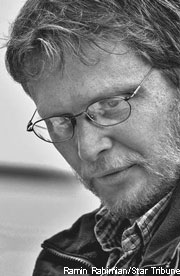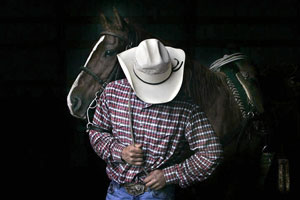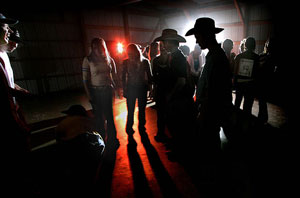 |
 | ||||||||||
Trying to Find My Photograph
|
 |
|||||||||
|
Soon after realizing that photojournalism was my calling, I came to understand that if I was going to enjoy a family life and survive in our creative yet incredibly competitive profession, I would have to find a niche. I had to find my own vision. While my ultimate dream remains to make a difference by finding that once-in-a-lifetime single photograph or picture story where everything falls into place, I finally feel like I have reached my potential. What has become clear to me over the years is that my strongest asset is to find wonder and eloquence in the everyday aspects of life. I seem to have found my way by seeking out those simple treasures. Unless these are frozen in time by the still, photographic moment, readers often take them for granted or fail to appreciate them even when they witness them in their own daily routines. While not necessarily monumental in scope, these moments are genuinely meaningful and instantly connect with the readers. Of course our job as photojournalists entails recording all walks of life, positive and less so, and I do the best I can to document both. Whenever I get a chance I like to balance the scales by contributing everyday moments that celebrate life.
Even so, as I stood in the rain trying to gather my thoughts about how I was going to approach the subject in order to come up with an interesting and hopefully insightful essay (not to mention trying to figure out how I was going to combat fogged elements in my zoom lenses!), I was uncertain how to begin. I had some definite ideas for images that I was looking for, but none seemed to materialize. For example, I assumed I would be able to easily focus in on the relationships between contestants, particularly boys and girls. But for the most part, each rider seemed emotionally isolated, immersed in the individual concentration required to compete. Ultimately I decided to stick with what I know best, that is to go looking for "my photograph," one moment at a time.
As you might imagine, there was plenty of mud, but in addition, the less than ideal weather afforded visual opportunities that would not have occurred on a warm, sunny day. For instance, many contestants opted to stay dry while waiting for their turn to compete and found refuge inside an old barn. Those waiting by the open door were bathed in a beautiful, directional light, kind of like a natural Soft-Box, that afforded a nice chance to compose quiet portraits and other details to round out my story. The relatively low outdoor light level also allowed me to experiment with some slower shutter speeds and panning. Sometimes it's best to check the preconceived notions at the door and go explore the situation with an open mind in order to uncover images you had not expected.
Some photographs from the rodeo ran in the newspaper, while additional images were shared with readers at our online site, startribune.com.
See the rodeo slide show at http://www.startribune.com/images/ss/1521_0.html.
I feel very lucky that I have had the good fortune to work with a great number of amazingly talented photojournalists over the course of my career from whom I've learned so much, a process that continues today here at the Star Tribune. The feeling that your work can always improve is exciting and rewarding. Still, before it's time to retire from the newspaper business the hope remains high that I might one day realize my dream of finding that once-in-a-lifetime photograph, but while I'm waiting for that image to materialize, I'll just have to keep working hard every day to find my photograph, one moment at a time.
© Jim Gehrz
Dispatches are brought to you by Canon. Send Canon a message of thanks. |
||||||||||
Back to August 2005 Contents
|
|



